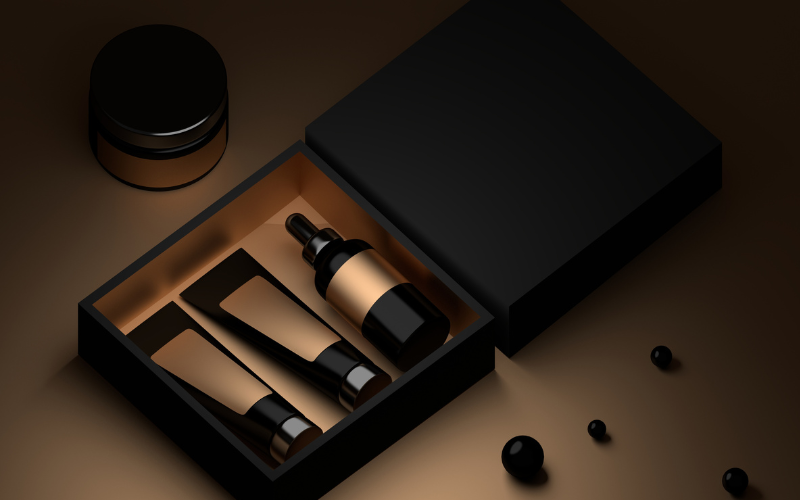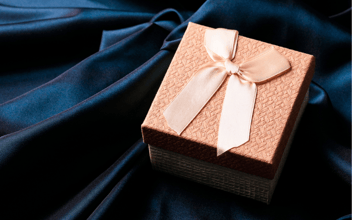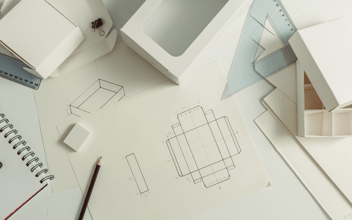High-End Packaging Tips for Cutting-Edge Design
Many people believe that luxury packaging is exponentially more expensive than traditional packaging. But the truth is that high-end packaging doesn’t need to break the bank.
Use innovative materials, exciting shapes, and creative printing techniques to elevate your packaging and give your brand a sophisticated appearance. In this blog, we’ll offer easy, actionable tips to improve your high-end packaging.
What is High-End Packaging?
If you’re not familiar with high-end packaging, you’ve probably seen it without recognizing it. High-end packaging is a type of premium packaging that connotes luxury and exclusivity.
For example, virtually all Apple products are packaged in sleek white cardboard boxes. The boxes themselves aren’t particularly expensive but the thoughtful design creates the impression that Apple’s products are exclusive.
Beyond electronics, high-end packaging is commonly used for jewelry, cosmetics, perfume, and designer fashion. Although high-end packaging is a broad category, it usually involves higher quality, durable materials and special finishing techniques like foil stamping, embossing, and die-cutting.
Use high-end packaging to differentiate your company from competitors and command a higher price point for your merchandise. Psychologically, consumers will pay more for an identical product if it uses luxury packaging.
Often, high-end packaging uses minimalist graphic design. Global Printing & Packaging can add a glossy finish to any logo and elevate packaging with a few simple design flourishes.
What Materials are Commonly Used in High-End Packaging?
Virtually any material can be adapted to appear more luxurious, but most high-end packaging uses a number of materials that reliably provide a premium feel. Some of the most common materials used in high-end packaging include:
- Luxury papers and boards: Rather than relying on cheap plastic, many high-end brands use premium paper and cardboard—often made from wood pulp, cotton, or bamboo, which are renowned for their durability and luxurious feel.
- Metals: Add a touch of luxury and a thin protective layer to your high-end packaging by using aluminum, silver, or even gold leaf on the exterior of your packaging.
- Glass: Consumers consistently rank glass above plastic in terms of perceived quality. Cosmetics, high-end foods, and perfumes all benefit from the clarity and elegance of glass. Even better, glass is easily reusable and recyclable.
- Plastics: If you decide to use plastic in your packaging, opt for a higher quality variety like polycarbonate or polypropylene. Nicer plastics can mimic luxury packaging, but most consumers prefer sustainable luxury packaging over single-use plastics.
- Leather and Suede: Premium products like watches and jewelry often incorporate leather and suede into packaging.
- Box Board and Foam: Although corrugated cardboard works fine for standard packaging, high-end packaging usually utilizes EDA foam or die-cut box board.
Ultimately, materials should be tailored to best suit each individual product. Consider working with a packaging engineer to design high-end packaging that conveys luxury, quality, and exclusivity.
Related Content: How to Add "Luxury" to Your Packaging Design
8 High-End Packaging Tips for Cutting-Edge Design
Use these tips to optimize your cutting-edge, high-end packaging:
- Use innovative materials: Packaging technology is advancing rapidly and it's never been easier to experiment with novel techniques like textured papers, special inks, and unique coatings.
- Emphasize the packaging shape: Attract customers’ attention with uniquely-shaped packaging like cylindrical containers or hexagonal boxes.
- Focus on the details: Often the difference between high-end packaging and standard packaging can be a small discrepancy in texture or material. Elevate your packaging with embossing, debossing, or foiling.
- Balance of the elements: Don’t overcommit to one design element, to the detriment of another. For instance, you can use spot gloss, which balances both matte and reflective surfaces.
- Utilize creative printing techniques: Letterpress or digital printing are cutting-edge techniques that will help your product stand out on the shelf.
- Consider the packaging's unboxing experience: Whether for an unboxing video or simply for the satisfaction of a buyer in the privacy of their home, it pays to make your packaging fun and satisfying to engage with.
- Make use of sustainable materials: Appeal to eco-conscious consumers (who make up an increasing majority of the public) with sustainable materials like post-consumer recycled paper or compostable plastics. Make sure to give yourself credit and build loyalty with eco-conscious customers.
- Make the packaging part of the brand: Keep your overall brand identity—including colors, logos, and values—while you design your packaging. If your high-end packaging reinforces your brand image, customers will be more likely to make a repeat purchase.
Takeaway
With these tips in mind, you can optimize your packaging, engage new customers, and even charge more for your merchandise. High-end packaging conveys exclusivity and luxury to buyers and boosts your brand image in the process.
Incorporate innovative materials, detailed design, balance, and sustainable materials into your packaging to maximize the effect of your packaging on customers. If you’re consistent with your branding, consumers will reward you with loyalty, repeat purchases, and higher margins on every product.






